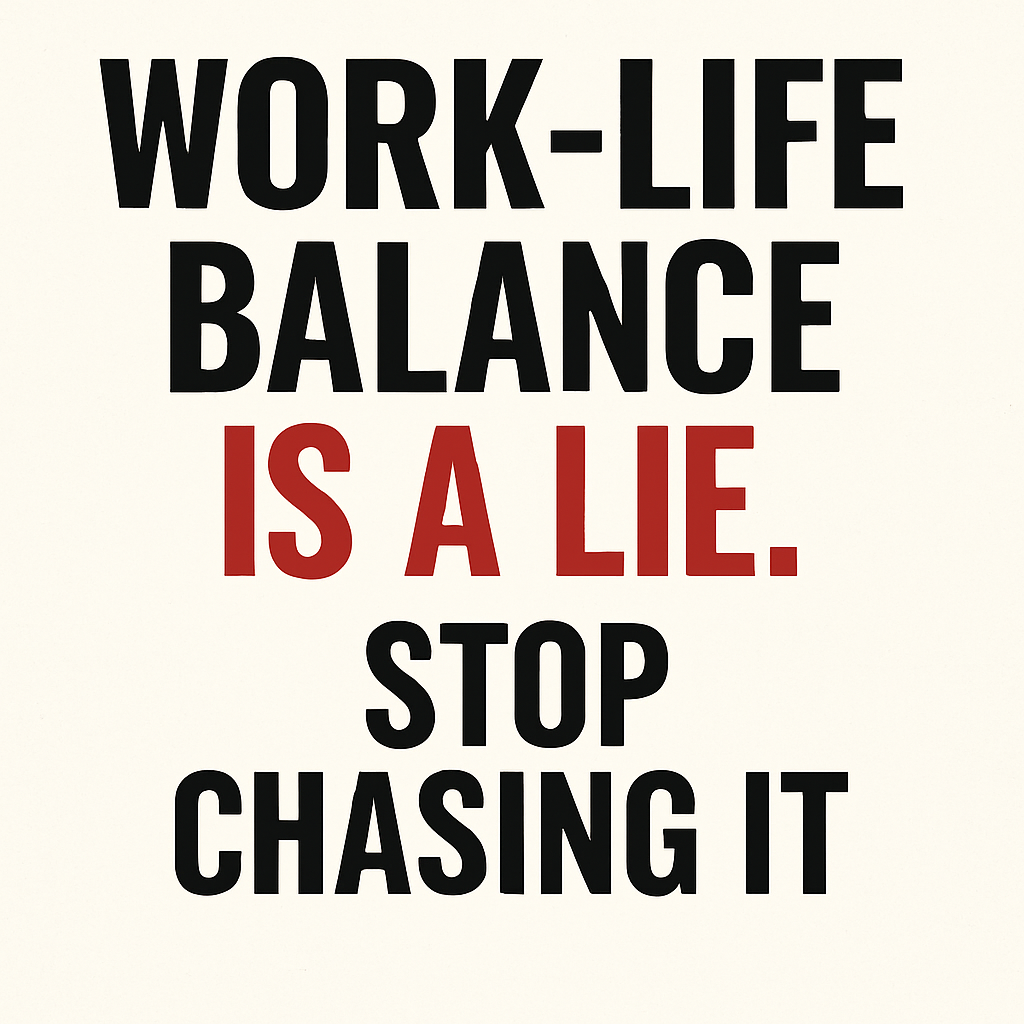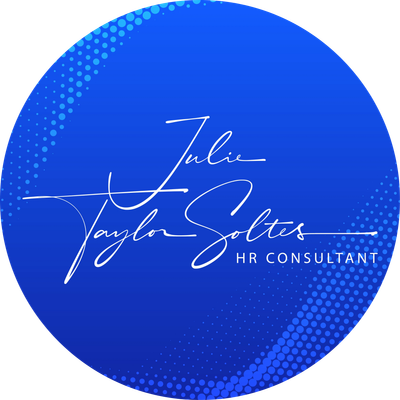Work-Life Balance is a Lie. Stop Chasing It.

For years, “work-life balance” has been one of the most repeated phrases in career advice, job interviews, and company culture statements. It’s a buzzword plastered across career sites and LinkedIn posts, usually framed as the ultimate measure of whether a workplace is healthy or not. It’s especially popular among younger generations entering the workforce. They ask about it in interviews. They expect employers to prioritize it. They want to know: “What do you do to support balance here?” The problem? Work-life balance doesn’t exist. And the sooner we face that truth, the sooner we can build lives and workplaces that actually work.
The Illusion of Balance
The phrase “work-life balance” paints a nice picture: two neat buckets, “work” and “life,” sitting on opposite ends of a scale. The goal, supposedly, is to keep them perfectly level, giving equal weight to both. But reality is never that clean. Work and life constantly spill over into each other:
- You answer emails during your kid’s soccer game.
- You vent about a tough day at the office over dinner.
- You get a creative breakthrough during a weekend hike.
- A family emergency pulls you away from a project deadline.
This isn’t imbalance — it’s life. Work and life are not competing buckets. They’re threads in the same fabric, woven tightly together. Trying to keep them separate only leads to frustration because the boundaries will always blur.
Why Chasing Balance Backfires
The pursuit of balance sounds healthy, but it often creates the opposite effect. When we buy into the myth, we start measuring ourselves against an impossible standard:
- If we spend more time at work, we feel guilty for “failing” in our personal lives.
- If we prioritize personal time, we fear we’re slipping behind in our careers.
- If we can’t find that elusive 50/50 split, we assume we’re doing something wrong.
The result? Stress, guilt, and burnout. Balance doesn’t reduce pressure — it amplifies it. Because no matter what you do, you’ll always feel like you’re falling short. And that’s why balance, as it’s been sold to us, is a trap.
Integration is the New Standard
If balance is a lie, what’s the alternative? Integration. Work-life integration acknowledges what balance denies: that our professional and personal lives are deeply interconnected. Instead of trying to keep them equal, integration asks us to design them so they complement each other. This doesn’t mean working all the time or blurring every boundary. It means being intentional:
- Structuring your workday to support your energy instead of drain it.
- Creating personal habits that strengthen your resilience at work.
- Allowing space for priorities to shift — some weeks your career takes the front seat, other weeks your family or health do.
Integration is fluid. It respects the natural ebb and flow of life instead of forcing it into a rigid, unrealistic mold. It’s about creating synergy between what matters most — and letting go of guilt when things aren’t “even.”
Why This Matters for Organizations
Here’s where it gets especially important for employers: job seekers are asking about balance in interviews, and they expect an answer. But too many companies respond with surface-level perks — “We have flexible schedules,” “We offer wellness days,” “We encourage people to disconnect.” Those things sound good, but if they aren’t backed by a genuine philosophy of integration, they ring hollow. Employees see through it quickly. Organizations that want to retain talent — especially younger workers — need to stop selling balance and start teaching integration. That means:
- Training managers to set realistic expectations.
- Encouraging honest conversations about priorities, trade-offs, and boundaries.
- Modeling a culture where work supports life, and life supports work.
When employees understand that integration — not balance — is the goal, they stop fighting against reality. They become more engaged, more resilient, and less likely to burn out.
The Bottom Line
It’s time to let go of the myth. Work-life balance doesn’t exist, and chasing it only leads to disappointment. The real key to success is work-life integration — building a life where your career and personal priorities fuel each other instead of fighting for dominance. It’s not about perfection. It’s about creating a life that works in practice, not just in theory.
Ready to Rethink the Conversation?
If this message resonates, it’s time to bring it to your organization. I provide training sessions for leaders and staff that go beyond the outdated concept of balance and focus on real strategies for integration. Through interactive discussions, practical tools, and mindset shifts, your team can learn how to:
- Move past guilt and unrealistic expectations.
- Design their days to create energy instead of exhaustion.
- Build a sustainable, integrated approach to success.
Reach out to bring this training to your staff — and download The Work-Life Integration Playbook free by entering your information in the ‘Contact Us’ section on this website.
